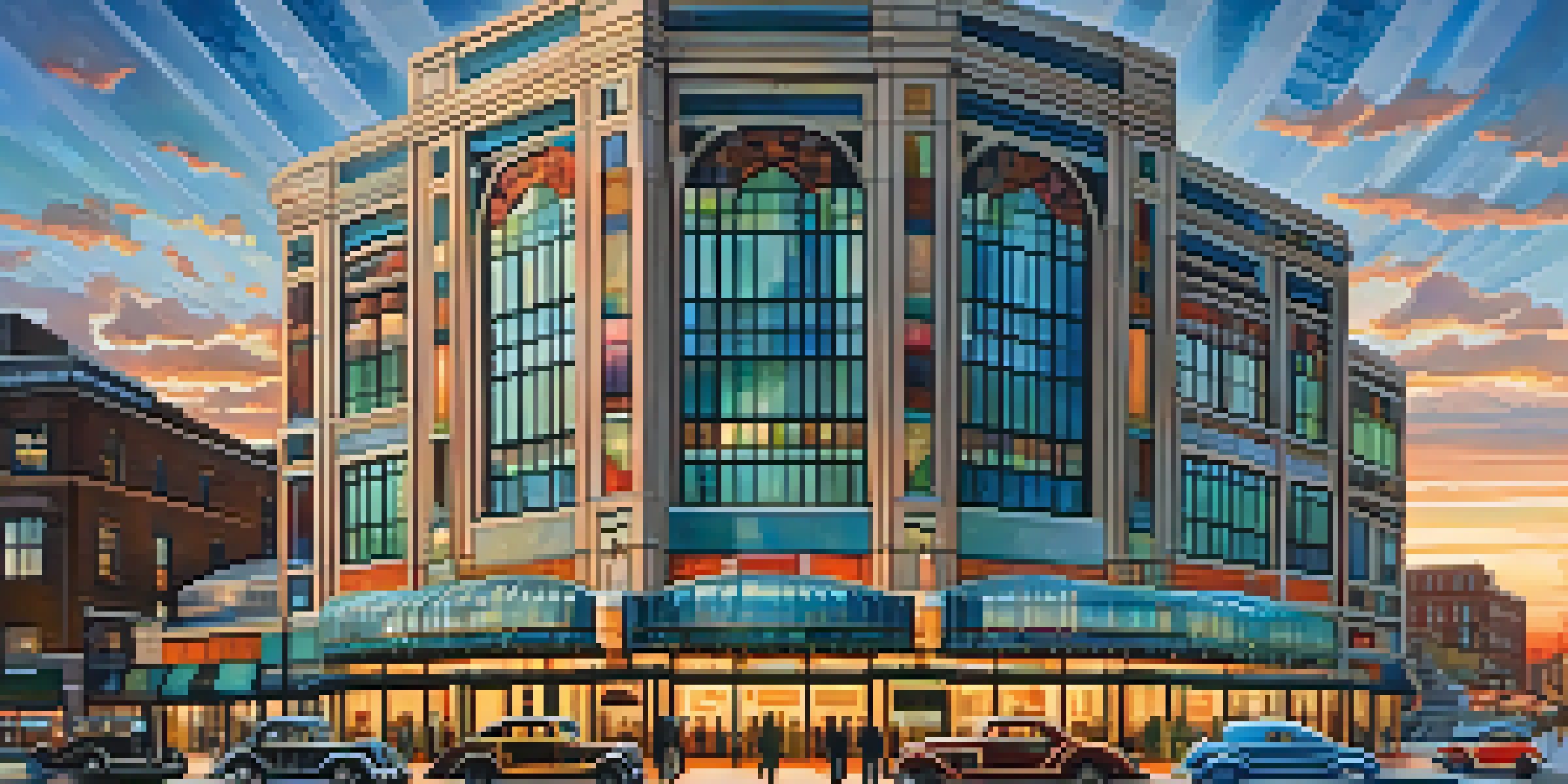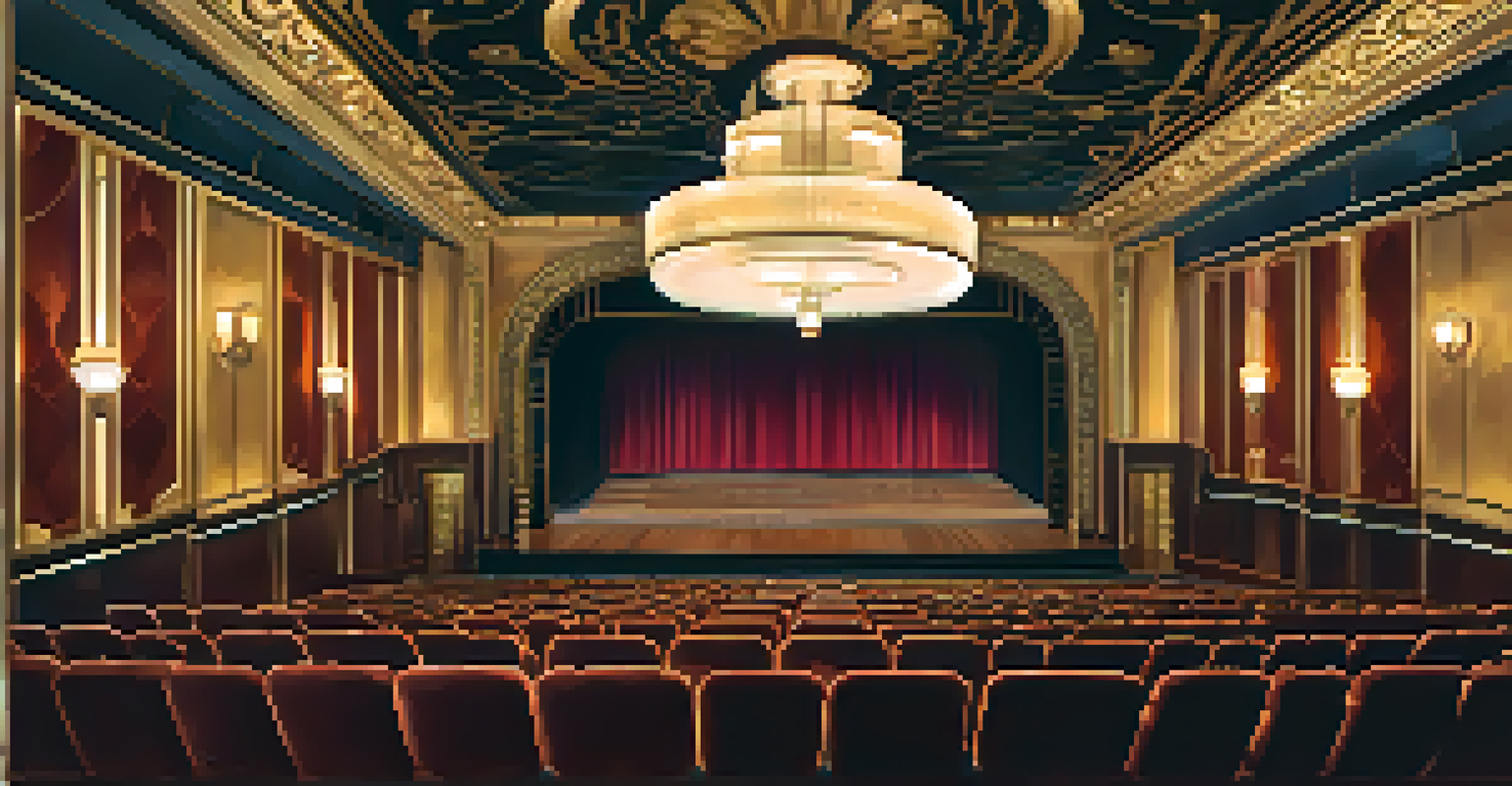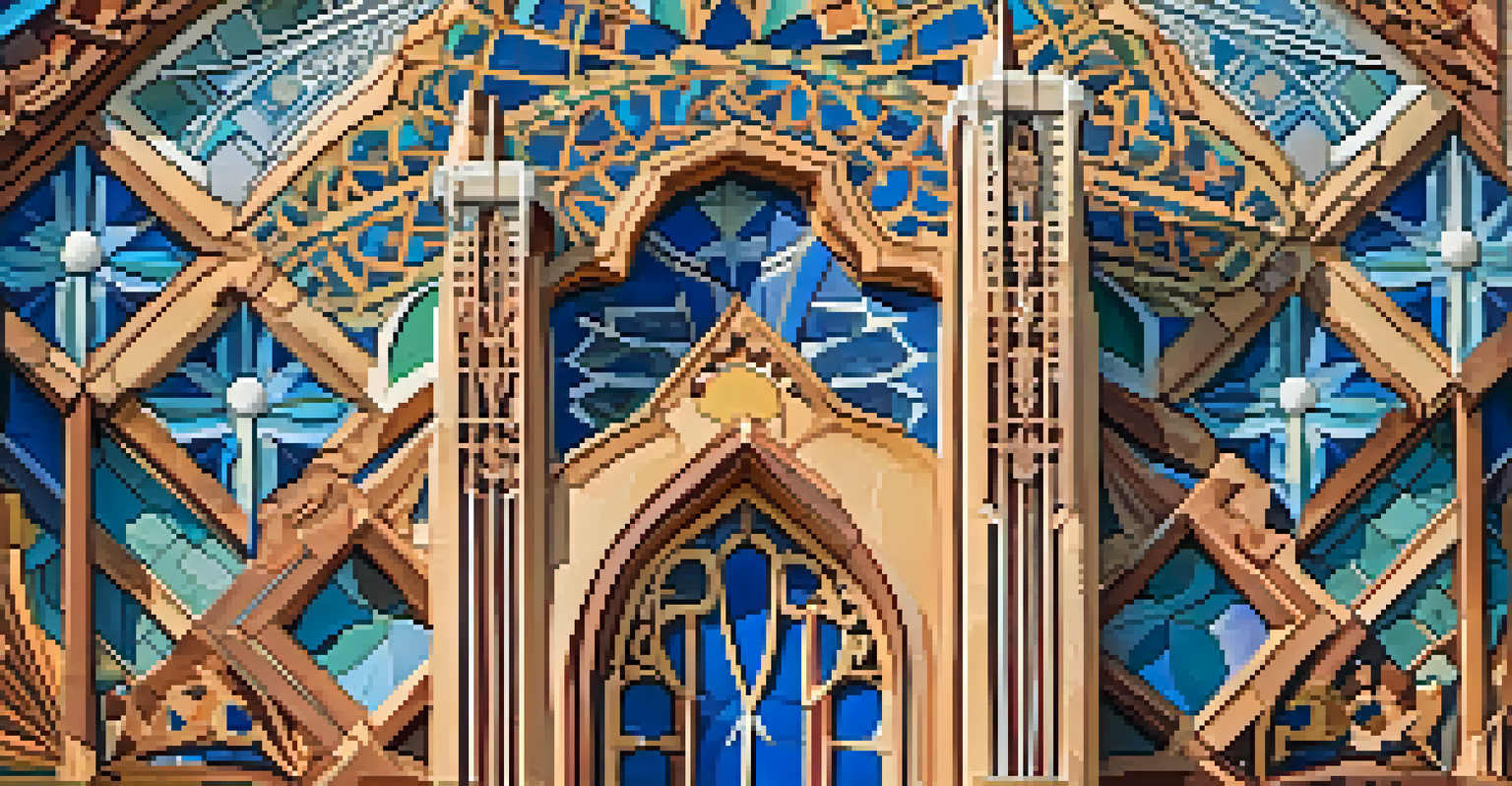Art Deco Influence on Boston's Architectural Evolution

Introduction to Art Deco and Its Origins
Art Deco emerged in the early 20th century, characterized by bold geometric shapes and vibrant colors. This design movement was a response to the ornate styles that preceded it, focusing instead on modernity and elegance. Its origins can be traced back to the 1925 Exposition Internationale des Arts Décoratifs et Industriels Modernes in Paris, where it captivated audiences with its innovative aesthetic.
Art Deco is a design style that captures the spirit of the modern age, blending technology and artistry to create something truly unique.
In the United States, Art Deco gained traction during the Roaring Twenties and the Great Depression, symbolizing a sense of optimism and progress. As cities expanded and modernized, architecture began to reflect the desires of a society embracing change. The movement's influence extended beyond buildings, permeating fashion, art, and even everyday objects.
Boston, a city with a rich historical tapestry, began to incorporate Art Deco elements into its architectural landscape, which marked a significant shift in design philosophy. This blend of traditional and modern aesthetics would pave the way for a new era in the city’s architectural evolution.
Key Characteristics of Art Deco Architecture
Art Deco is known for its distinctive features that set it apart from previous styles. It often includes streamlined forms, chevrons, and sunburst motifs, which evoke a sense of movement and dynamism. The use of materials like chrome, glass, and concrete not only added to its modern appeal but also showcased the technological advancements of the time.

Color also plays a crucial role in Art Deco, with vibrant hues often juxtaposed against more muted tones. This strategic use of colors aimed to create a striking visual impact, drawing attention to the buildings and their unique designs. Architects often incorporated decorative elements, such as intricate mosaics and sculptures, to enhance the aesthetic experience.
Art Deco's Role in Boston's Identity
Art Deco significantly shaped Boston's urban identity, symbolizing a shift towards modernity and innovation during the early to mid-20th century.
In Boston, these characteristics can be seen in various structures, from commercial buildings to residential homes, creating a visual dialogue between the past and the present. The Art Deco style not only transformed the architectural landscape but also contributed to the city's burgeoning identity as a center for modern design.
Boston's Iconic Art Deco Structures
Several buildings in Boston exemplify the Art Deco style, each telling a story of its time. One prime example is the Boston Public Library’s McKim Building, which, while primarily Beaux-Arts, features Art Deco elements in its later additions. This fusion highlights how the city embraced new styles while respecting its historical context.
Architecture should speak of its time and place, but yearn for timelessness.
Another notable structure is the Guardian Building, known for its striking facade adorned with colorful tiles and intricate carvings. This building serves as a testament to the craftsmanship and attention to detail that defined the Art Deco era. Its design continues to inspire new generations of architects and designers in Boston.
Additionally, the former Filene's department store, with its bold geometric patterns and decorative motifs, stands as a landmark of Art Deco in the city. These structures not only enhance Boston's skyline but also serve as cultural touchstones, reminding residents and visitors alike of the city’s vibrant architectural history.
The Role of Art Deco in Boston's Urban Identity
Art Deco played a pivotal role in shaping Boston's urban identity during the early to mid-20th century. The style represented a departure from the city’s colonial past, signaling a shift towards modernity and innovation. This evolution in architecture reflected broader societal changes, including shifts in economic and cultural paradigms.
As Boston embraced Art Deco, it fostered a sense of pride among its residents. The buildings became symbols of progress, embodying the spirit of the times and the aspirations of a city poised for growth. This pride was particularly evident during the Great Depression when the construction of Art Deco buildings provided jobs and revitalized the local economy.
Preservation of Art Deco Heritage
Efforts to preserve Boston's Art Deco heritage are crucial for maintaining the city's architectural significance and cultural identity.
Moreover, the Art Deco style contributed to a unique cultural landscape, with its influence extending beyond architecture into the arts, fashion, and design. This interconnectedness helped solidify Boston’s reputation as a city that values creativity and innovation.
Preservation Efforts for Boston's Art Deco Heritage
As Boston continues to evolve, preserving its Art Deco heritage has become a priority for many community advocates. Recognizing the architectural significance of these structures, various organizations work tirelessly to protect and restore them. Such efforts ensure that future generations can appreciate the rich history and artistry embodied in these buildings.
Preservation initiatives often involve collaborating with local government and heritage organizations to secure funding and support for restoration projects. These collaborations are crucial in maintaining the integrity of the Art Deco style while adapting to contemporary needs. For instance, some buildings have been repurposed for modern use while retaining their historical charm.
Community engagement also plays a vital role in these preservation efforts, as residents often rally to support initiatives that honor the city’s architectural legacy. By fostering a sense of ownership and pride in Boston's Art Deco heritage, these efforts not only protect the past but also enrich the city’s cultural identity.
Art Deco's Influence on Modern Boston Architecture
The legacy of Art Deco continues to resonate in Boston's contemporary architectural landscape. Many modern architects draw inspiration from its bold designs and innovative use of materials, blending these elements with sustainable practices to create new landmarks. This fusion of old and new highlights the ongoing dialogue between historical styles and modern needs.
For example, some recent developments incorporate Art Deco motifs, such as geometric patterns and vibrant colors, into their facades, creating a seamless connection to the past. This approach not only pays homage to the Art Deco era but also enriches the visual complexity of the urban environment. It shows how historical styles can inform and enhance modern architecture.
Influence on Modern Architecture
The legacy of Art Deco continues to inspire contemporary architects in Boston, blending historical elements with modern design practices.
As Boston moves forward, the influence of Art Deco serves as a reminder of the city's commitment to innovation while honoring its rich architectural heritage. This balance between preserving the past and embracing the future continues to shape the city’s identity and aesthetic appeal.
Conclusion: Celebrating Art Deco's Enduring Legacy
Art Deco has left an indelible mark on Boston's architectural evolution, shaping not only the skyline but also the city's cultural identity. The movement's emphasis on modernity, craftsmanship, and vibrant aesthetics continues to inspire architects and designers today. As we celebrate this rich heritage, it's essential to recognize the stories and histories that these buildings embody.
In many ways, Art Deco represents a bridge between the past and the future, encapsulating a period of transformation that resonates with the spirit of Boston. By preserving and promoting these architectural gems, we ensure that the legacy of Art Deco remains a vital part of the city's narrative.

As Boston embraces its historical roots while looking towards the future, the influence of Art Deco will undoubtedly continue to play a significant role in shaping the city's architectural landscape for years to come.